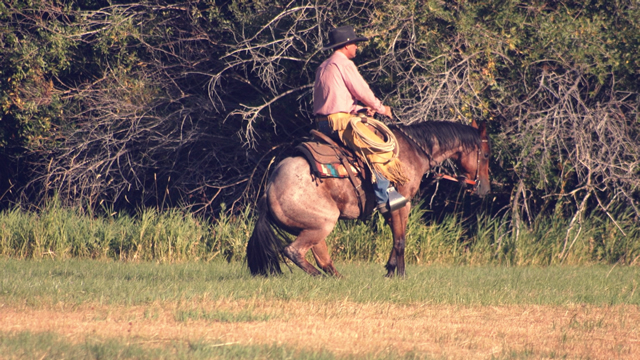Written by Martin Black
This article originally appeared in Eclectic Horseman Issue No.66
It is always interesting to me when working with riders to see what they demonstrate when asked to stop their horse.
Some may trot or lope out and perform a nice, soft, straight stop with the horse using his hindquarters, supple from his poll through his hocks, stopping, and then standing quiet and relaxed. That would be my idea of a nice stop, smooth, putting out effort then stand quiet until asked for something else.
What we often see instead is the horse resisting the bridle, stiff in the poll which usually transfers to being stiff through the body down through the legs. Resistance to the bridle can also cause the horse to travel crooked while stopping. If the horse is uncomfortable or worried while trying to stop, he may not stand quiet when asked to stop.
Basically we can have a lot of reasons that our horses don’t stop well for us. Pulling harder is often the choice to improve the stop but rarely is that the answer to the problem.
Regardless of what other issues may be in our way of getting a good stop, the one thing that we need is for the horse to stand relaxed and stand quiet when stopped. If the horse stops and then wanders off, or is nervous and doesn’t stay in his tracks at the end of the stop he is not thinking stop and will not be preparing and putting the effort into the stop that he could if he were looking forward to some quiet time. Backing a step or two at the end of a stop may help reinforce the horse to pull with the hindquarters, but making it too traumatic can cause resistance and distract the horse’s thoughts.
The relief of being stopped can be a major motivator, even softening our hands as the horse shows effort going into the stop can motivate him to think stop. Where more pressure from our hands may discourage and make it difficult for him to stay supple and want to stop. We need to be aware of the energy level in our horse before we school our horse on stopping. When he is in the mood to play and be fresh he will not be thinking stop like he would be if he were a bit tired or needing to air up. If your horse is energetic, use that energy up first then work on stopping and he will appreciate it more. With these things working for you the horse will be mentally ready to stop and he can fill in a lot of other details needed for a good stop.
Some other things that will help are to have the horse moving freely in a straight line when asking to stop. You can be loping a circle or traveling around the arena, but if you just straighten out for just a few strides the horse can stop straight. If the horse is reaching a long full stride, the hind feet will be farther underneath the horse, so when we ask for the stop it will be easier for the horse to use the hindquarters. There are a lot of ways to motivate a horse to stop; some have certain side effects that you may need to deal with later. But if you can make it easy for him to stop with comfortable contact from the bridle, good footing, shoes, and possibly protective leg wear that makes stopping more favorable, then let him stand and relax. The horse will fill in and help us if we make it desirable for him.
This article originally appeared in Eclectic Horseman Issue No.66


